MARIANI’S
Virtual
Gourmet
December
16, 2018
NEWSLETTER
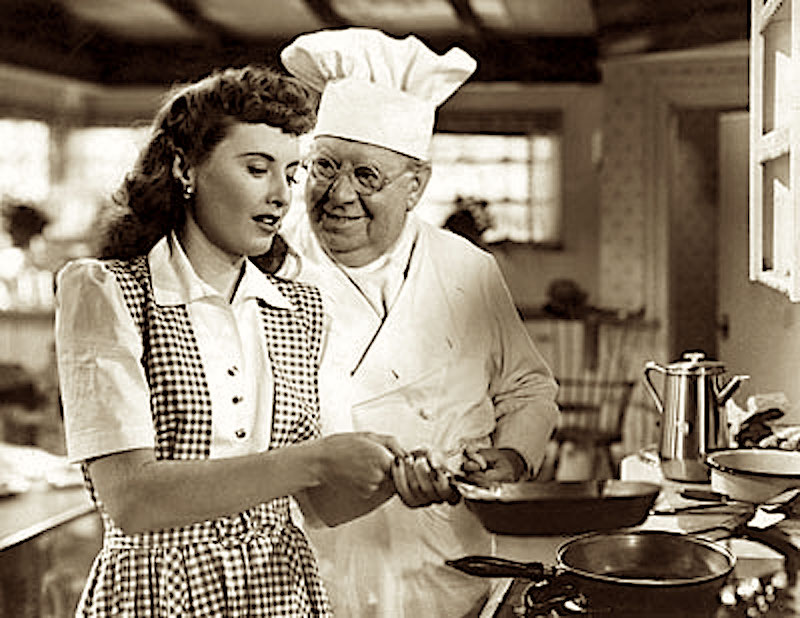
❖❖❖
IN THIS ISSUE
TAPAS LAS VEGAS
By John A. Curtas
NEW YORK CORNER
KASHI STAMFORD
By John Mariani
NOTES FROM THE WINE CELLAR
VINTAGE CHAMPAGNES
By Geoff Kalish
❖❖❖
WHAT'S NEW IN LAS VEGAS
OFF THE STRIP?
By John A. Curtas
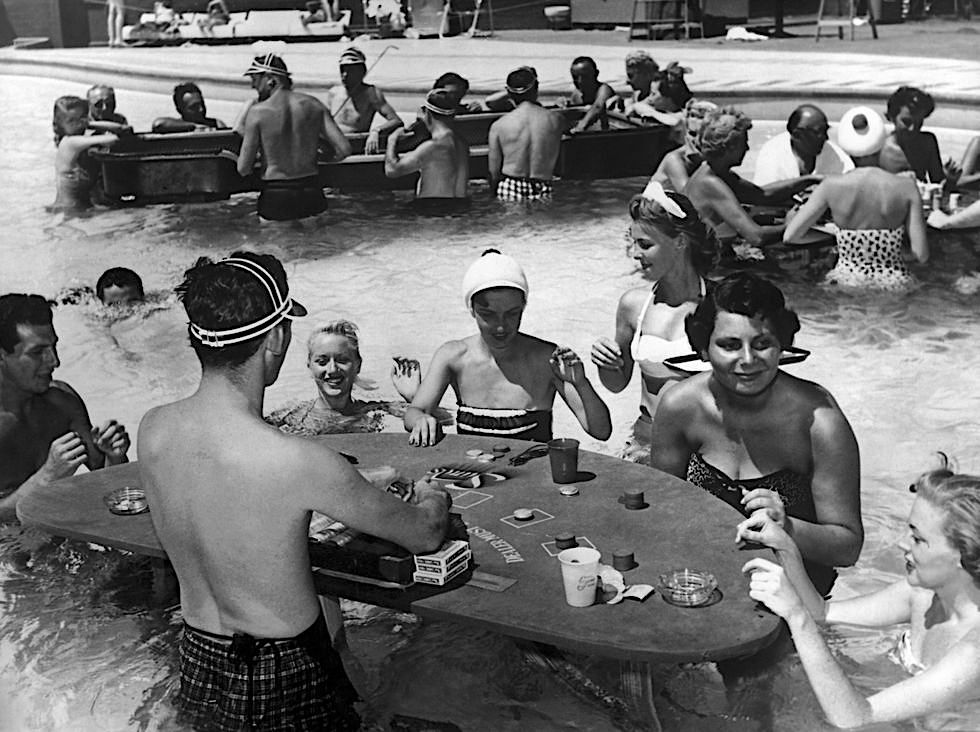
What's
new in Vegas?
Well, quite a lot,
but almost all of it is happening off the Strip.
Unless you're the sort to get excited about
Giada De Laurentiis slapping her name on some
fast-casual outlet at Caesars Palace, or Gordon
Ramsay phoning it in with something called
Hell's Kitchen, there's not much to talk about
on Las Vegas Boulevard South.
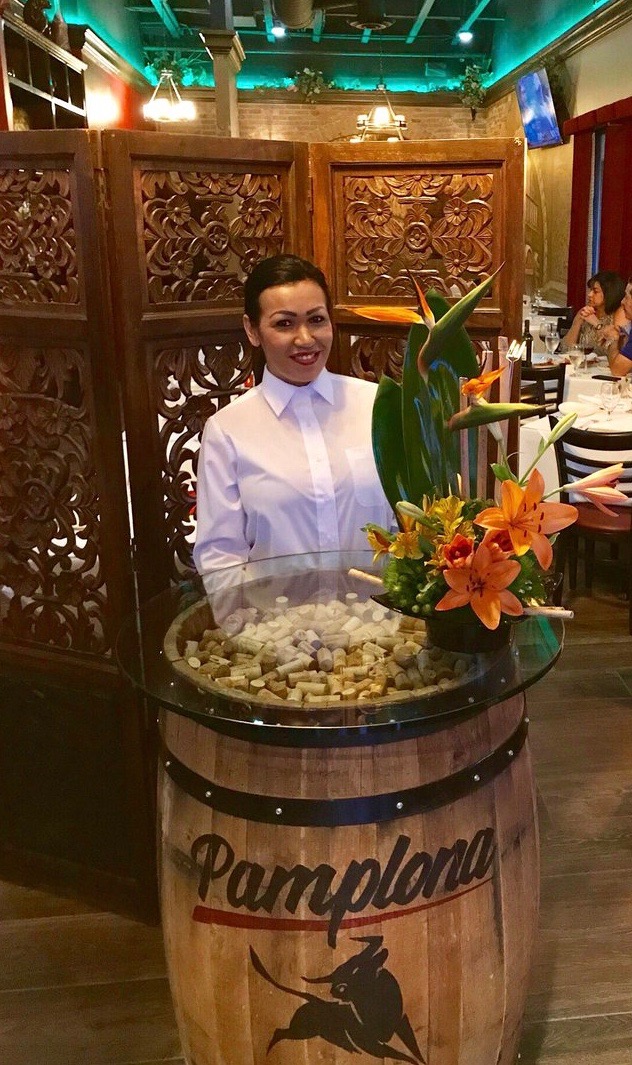 On the plus
side, Spago's new reboot in the Bellagio has
breathed some much needed life into the old Olives
space, and the Michael Mina
reboot has gone swimmingly. It now gives Las Vegas
a second restaurant to challenge Estatorio Milos
for serious seafood hegemony.
On the plus
side, Spago's new reboot in the Bellagio has
breathed some much needed life into the old Olives
space, and the Michael Mina
reboot has gone swimmingly. It now gives Las Vegas
a second restaurant to challenge Estatorio Milos
for serious seafood hegemony.
Aside from those, things have been pretty quiet on
our three-mile stretch of Las Vegas Boulevard
South for the past three years. NoMad (the hotel
and namesake restaurant) will open next month just
off the Strip, but, until then, it's the local
food scene that is creating all the buzz, and here
are the places serious foodies are talking about
these days.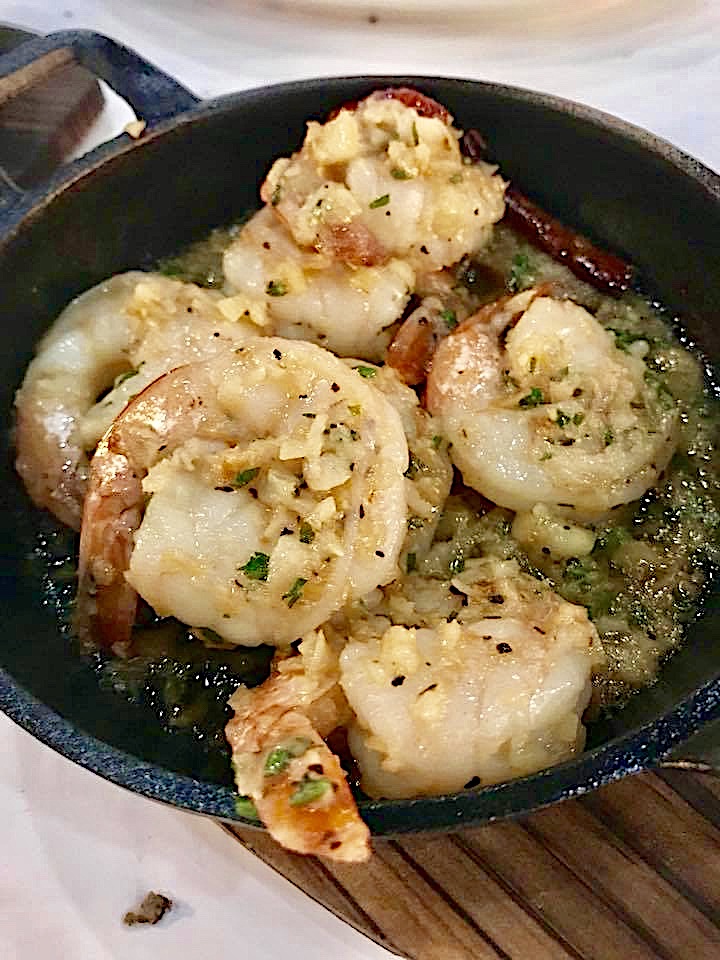
Three separate small-plates restaurants opened
this past summer, and lovers of tempranillo, pulpo and patatas bravas
couldn't be happier.
Pamplona
Cocktails and Tapas (5781
W. Sahara Ave.;702-659-5781)
is the
most authentic of the bunch, with Chef Errol
LeBlanc cooking paella
Valenciana, pulpo asado, and croquetas so
good they will save you a ticket to San Sebastian.
Start your meal with some jamon
serrano on crusty bread, or the spicy sobrasada sausage
spread. Move on to some Peruvian snapper ceviche
with piquillo peppers, then to the most authentic
versions of aceitunas
(olives), patatas bravas (baby potatoes),
setas al ajillo
(mixed mushrooms with lots of garlic), piquillo relleno de
queso de cabra (roasted, stuffed peppers)
and a tortilla
Español that Las Vegas has never seen.
The hits keep coming with croquetas de pollo oozing
with béchamel, empanadas and gambas al ajillo
(shrimp with garlic) guaranteed to drive away all
vampires. The dishes are not bereft of
subtlety—LeBlanc knows how to balance his
flavors—but he skews towards the genuine over
trying to coddle the uneducated palate, further
proving his mettle with an array of plancha,
grilled and skewered meats, all
cooked with care, with honey-glazed pork belly (below) and
lamb chops the ones not to miss.
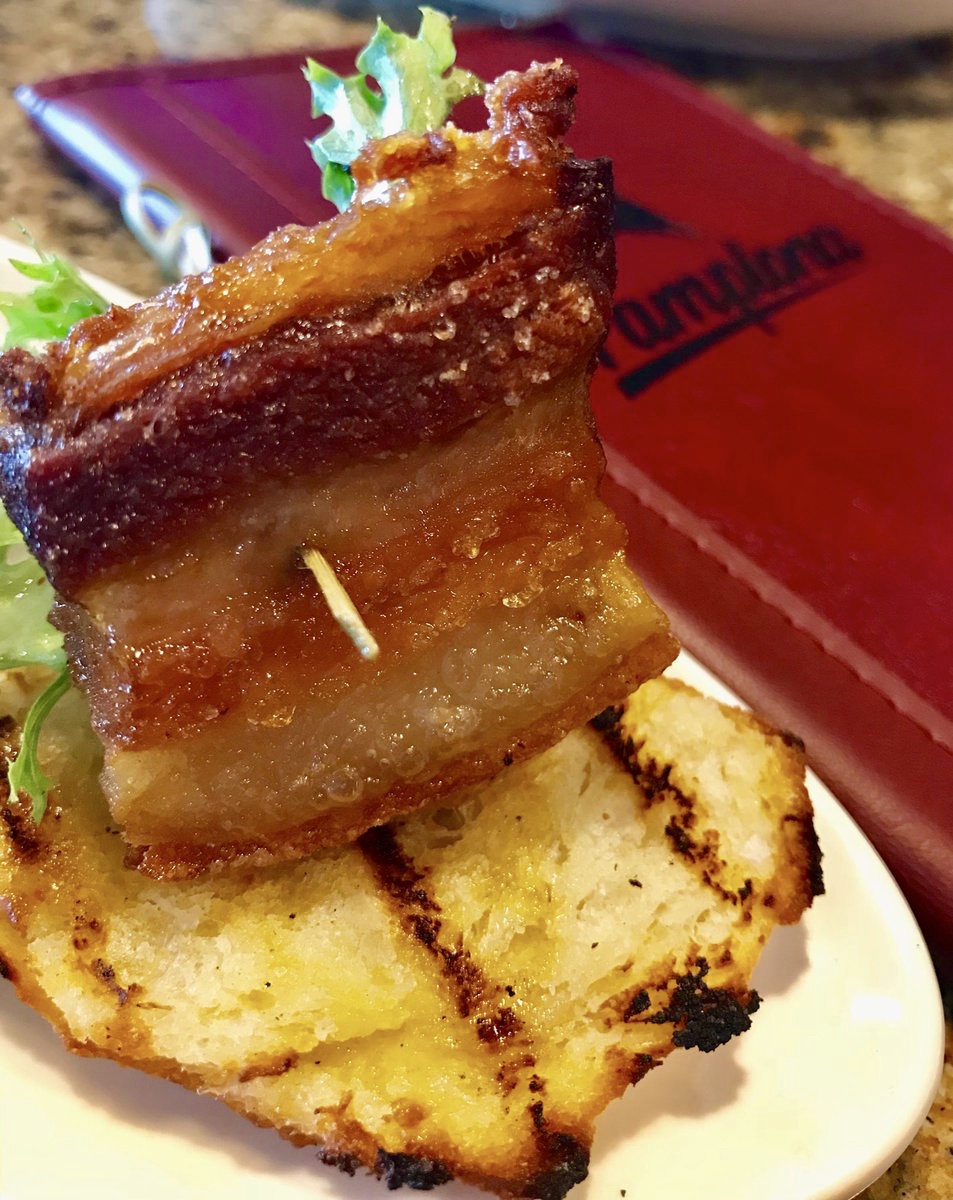 About the
only thing I can't recommend about Pamplona is the
wine list. In this era, when so much interesting
wine is
coming out of Spain, Portugal and South America
(at all price points), the restaurant’s meager
selection does no justice to either the food or
the atmosphere. And, even though few Americans
like to drink it, there should be several sherries
offered by the glass, because absolutely nothing
goes better with Spanish ham.
About the
only thing I can't recommend about Pamplona is the
wine list. In this era, when so much interesting
wine is
coming out of Spain, Portugal and South America
(at all price points), the restaurant’s meager
selection does no justice to either the food or
the atmosphere. And, even though few Americans
like to drink it, there should be several sherries
offered by the glass, because absolutely nothing
goes better with Spanish ham.
Travel
about a mile south and you'll find Edo
Tapas & Wine (below; 3400 South Jones Blvd.; 702-
641-1345), half as big as Pamplona
with twice the ambition. Its matchbox size belies
an attempt to expand the flavors of Spain beyond
conventional boundaries. It may look
unassuming from the front, but Edo has quite a
pedigree. Executive Chef Oscar Edo is a Strip
veteran (and a survivor of the food truck craze),
while partner Roberto Liendo (formerly g.m. at
Bazaar Meat) runs the front of the house. Between
them, they have a strong sense of the food and
service a place like this needs to appeal 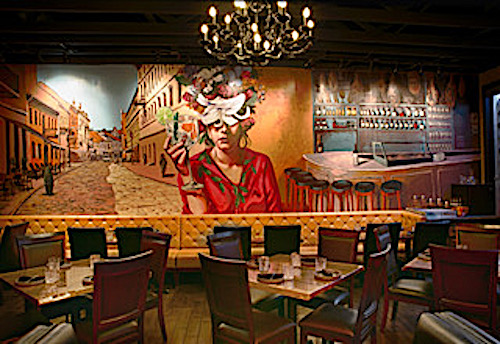 to
gastronauts who demand the new over the tried and
true.
to
gastronauts who demand the new over the tried and
true.
Four different dressed oysters are offered,
depending upon what sort of bath you like your
bivalves to take. I preferred the tamarind mole with
pickled cucumber, though you might like yours to
be swimming in kiwi leche de tigre or braised
melon, lemon and mint. Bottom line: they're all
fabulous.
As satisfying as these starters are, it is in the
cold and hot tapas where Edo hits his
stride. His fermented tomatoes with burrata
and basil both sparkles and soothes the palate the
way only super-sweet tomatoes can, making like a
super-ripe Caprese at half the weight. Nice big
chunks of Maine lobster come "salpicón-style—dressed
with more of that "tiger's milk,” 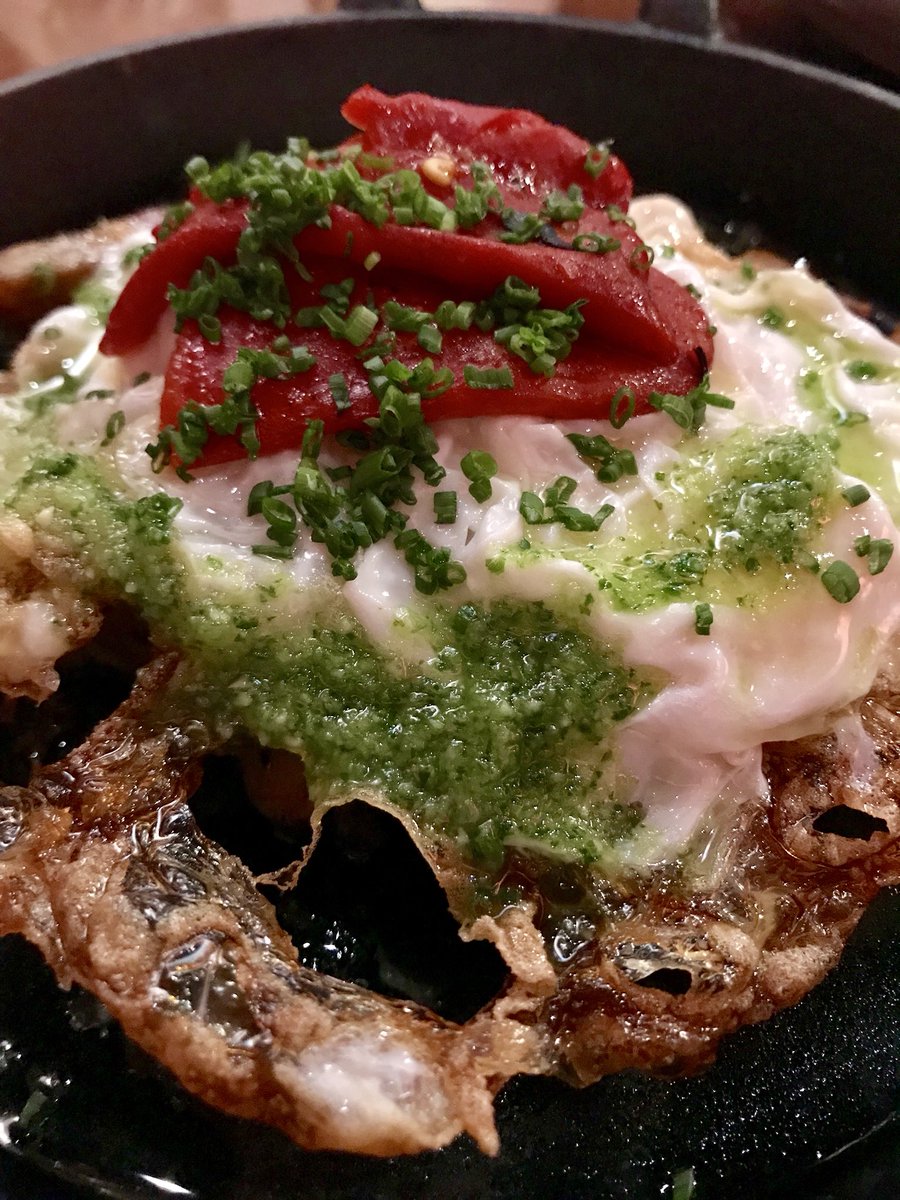 which nicely lightens the richness
of the crustacean. On the "hot tapas" side, go for
the croquetas with
kimchi pisto;
pulpo viajero
(octopus with tamarind mole), buñelos de bacalao
(salt cod fritters with squid ink and lime); and
something called "Bikini”—a thin, crispy
compression of sobrasada
and Mahon cheese—which might be the last word in
tiny toast.
which nicely lightens the richness
of the crustacean. On the "hot tapas" side, go for
the croquetas with
kimchi pisto;
pulpo viajero
(octopus with tamarind mole), buñelos de bacalao
(salt cod fritters with squid ink and lime); and
something called "Bikini”—a thin, crispy
compression of sobrasada
and Mahon cheese—which might be the last word in
tiny toast.
One of the more eye-popping offerings is Huevos Estrellado
(left), a
toothsome concoction of olive-oil fried eggs and
piquillo peppers sitting atop a melange of
mushrooms and fried potatoes; the collection of
maitake, shitake, enoki, and king-oysters is
terrific in its own right, but top it all off with
those eggs and peppers, and some garlic-parsley
oil and you have a classic of Spain tweaked in all
the right ways.
After bombarding your senses with all those
oysters, clams, eggs, hams and octopus, you'll
need something simple and soothing. The flan here
pushes all the right buttons, and the olive oil
dark chocolate fudge does the same. If you're
looking to go lighter, try the surprising
intensity of the strawberry granita with popcorn
mousse.
Mordeo
Boutique
Wine Bar (5420
Spring Mountain Road; 702-545-0771) is a
small-plates purveyor of a different stripe. Where
Pamplona shoots
and scores with authentic, Madrid-style tapas, and
Edo gives
an updated spin to Spanish classics, Mordeo takes
the tapas thing in several different directions.
What confronts you when you enter is a long,
30-seat, colorful three-sided bar. This counter
represents the latest manifestation of the
side-by-side dining that has been all the rage
since Joël Robuchon made such a splash with it
fifteen years ago. Those of a certain age may find
it a tad awkward, and there are a couple of
high-boy tables in one corner where four to six
people can actually talk without leaning in and
out with every sentence. Hearing is another
matter.
Once you get comfortable (and to their credit, the
staff puts everyone at ease), you will observe the
hustle and bustle behind the bar, all
sorts of people moving to and fro, taking orders,
mixing drinks, pouring wines, and delivering
plates. It's really quite a scene, and
only a few  months
into its run, the staff and kitchen seem well
synchronized. If you score one of those tables,
don't expect to hear any whispered sweet nothings
from your dearly beloved though, as that would
require a bullhorn over the din.
months
into its run, the staff and kitchen seem well
synchronized. If you score one of those tables,
don't expect to hear any whispered sweet nothings
from your dearly beloved though, as that would
require a bullhorn over the din.
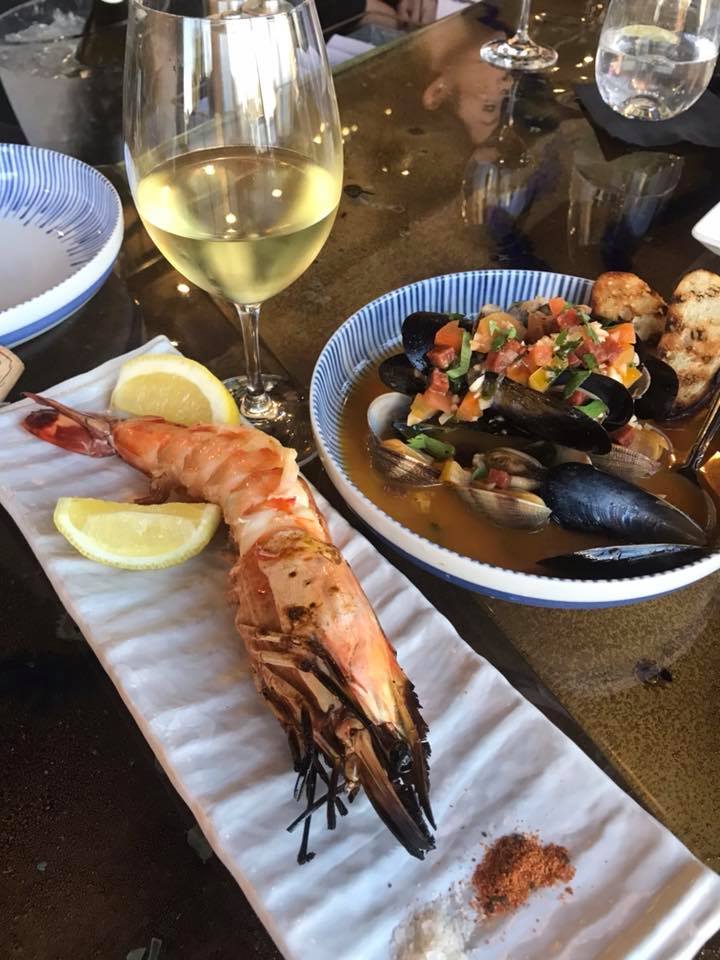 A
small-but-potent wine list is offered—five whites,
six reds, some sake, several sherries—but
everything is priced to sell. Strip wine maven
Luis de Santos co-owns and runs the libations side
of things, and he has tailored his wines to go
with the food, but also to be quaffed and enjoyed,
not pondered and discussed. You almost get the
feeling that he and chef/owner Khai Vu are testing
the waters with these wines, as they try out which
ones, at what price point, will appeal to their
customers. Something tells me the offerings will
expand as this place gains its footing, and every
bottle won't always be in the $30-$50 range. But
for the time being, everything is quite a
bargain—even the beer.
A
small-but-potent wine list is offered—five whites,
six reds, some sake, several sherries—but
everything is priced to sell. Strip wine maven
Luis de Santos co-owns and runs the libations side
of things, and he has tailored his wines to go
with the food, but also to be quaffed and enjoyed,
not pondered and discussed. You almost get the
feeling that he and chef/owner Khai Vu are testing
the waters with these wines, as they try out which
ones, at what price point, will appeal to their
customers. Something tells me the offerings will
expand as this place gains its footing, and every
bottle won't always be in the $30-$50 range. But
for the time being, everything is quite a
bargain—even the beer.
Tasty,
inexpensive wine may be what brought you through
the door, but the food is what will keep you here.
Everyone starts with something called "The Cloud"
(above)
and it's a worthy way to begin the proceedings. A
giant fried chiccarone
is brought to the table festooned with thin strips
of jamon
iberico. The salty crispiness gets the
palate juices flowing and sets you up for a number
of dishes that are as attractive as they are
savory. The Caesar salad is a worthy version, and
the Beet Garden—red and golden beets with a goat
cheese mousse—is as wine-friendly (and pretty) as
any root veggie dish can get.
You'll want to follow those with the lomi lomi
ocean trout ceviche (above left) and then either the
cold, briny oysters, or the ginormous Nigerian
prawn (above)—all
of which prove chef/owner Khai Vu is serious about
his seafood (left).
The meaty king crab leg (at $38, the most
expensive thing on the menu) is big enough for
two, and the La Asada (grilled Angus skirt steak
with chimichurri sauce) shows off Vu's
facility with grilling denser proteins over binchotan
charcoal. A stew of clams, chorizo, and mussels
easily feeds two and has quite a kick of its own (left) from
the white wine/sriracha sauce.
Desserts are only two in number and always in
flux, but if the mango rice pudding, made to look
like a fried egg, is offered, don't miss it.
There is both
ingenuity and restraint in these dishes, which is
rare these days, and while it's easy to decry the
menu's lack of focus, the wild ride you take among
these flavors captivates your palate without ever
wearing it out. If you squint a little, you'll see
a lot of similarities to what Edo is doing just
down the street. But whereas Oscar Edo
keeps his eye on Spain, Khai Vu lets his wander a
little farther, and tosses in everything from
Mexico to the Asian kitchen sink. That he does
this without ever going one seasoning too far is
quite extraordinary. Mordeo, like its competition,
may have hit on just the right formula to drive
complacent palates down to Spring Mountain
Road—interesting, hand-tooled, strongly seasoned,
wine-friendly food, the kind Las Vegas
off-the-Strip has needed forever, the kind you can
now find in three restaurants all within a couple
of miles of each other.
❖❖❖
By John Mariani
131 Summer Street
Stamford, CT
201-890-9995
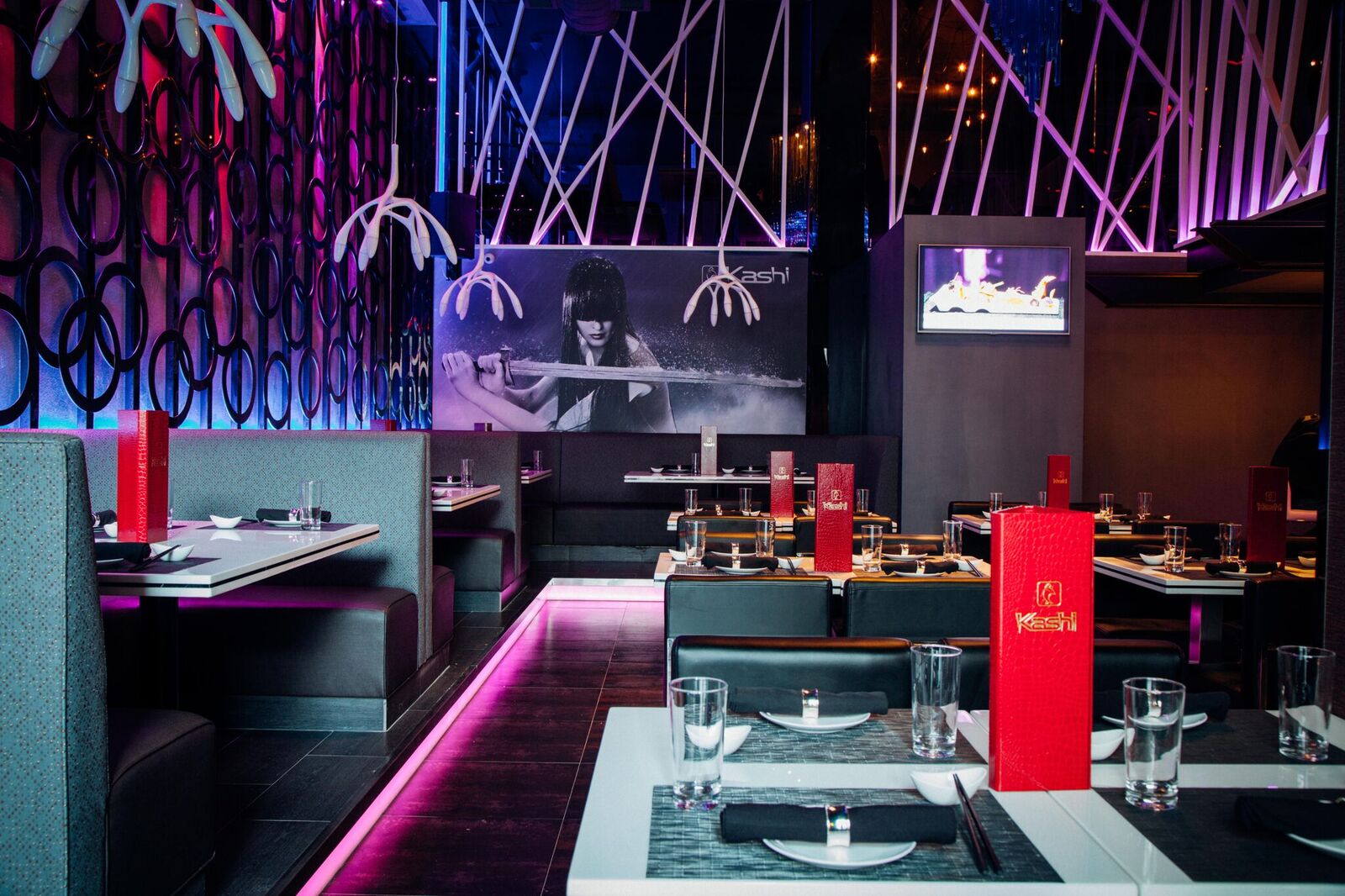
For a city its size,
Stamford, Conn., could certainly use a few
restaurants that rise above the mediocre, and
Kashi, now two-and-a-half years old, does so
with a whole lot of pizzazz. Part of a small
Long 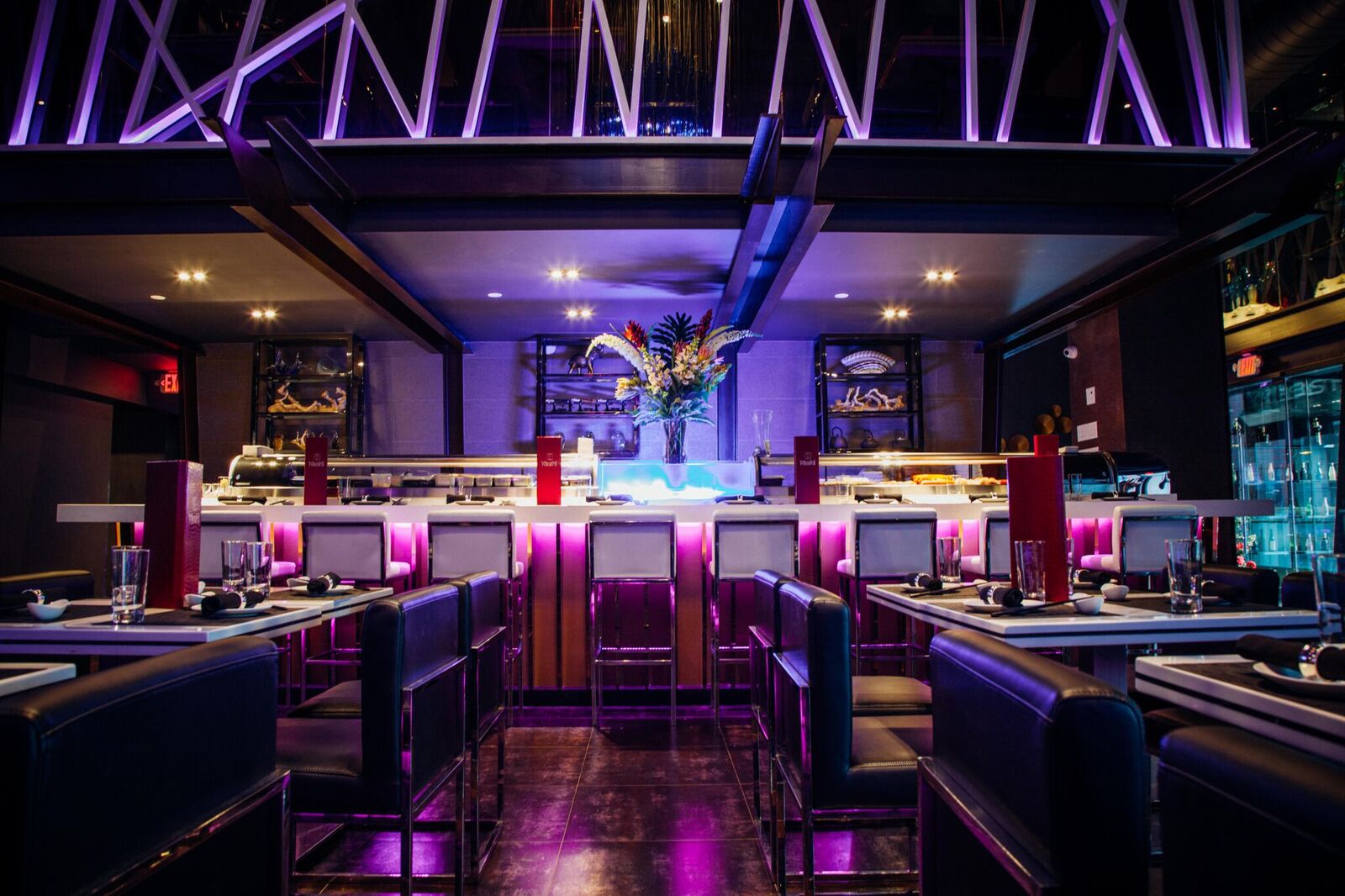 Island
chain, this is the only one in Connecticut,
strategically located next to a Crowne Plaza
Hotel and
across from a Majestic multiplex movie theater.
The intent is to attract both those who love
modern Japanese food and those who want a
cocktail lounge for entertainment.
Island
chain, this is the only one in Connecticut,
strategically located next to a Crowne Plaza
Hotel and
across from a Majestic multiplex movie theater.
The intent is to attract both those who love
modern Japanese food and those who want a
cocktail lounge for entertainment.
Fortunately, the latter, upstairs, does not
infringe too much on the former, despite a
pounding bass line in the air. This is
a big space, and the downstairs dining room, with
sushi counter and bar, is shadowy and pretty
dark—the walls and ceiling are painted
black—lighted mostly by chandeliers. Tables
are roomy and very comfortable, and the service
staff, led by manager Daniel Li, mostly
Asian.
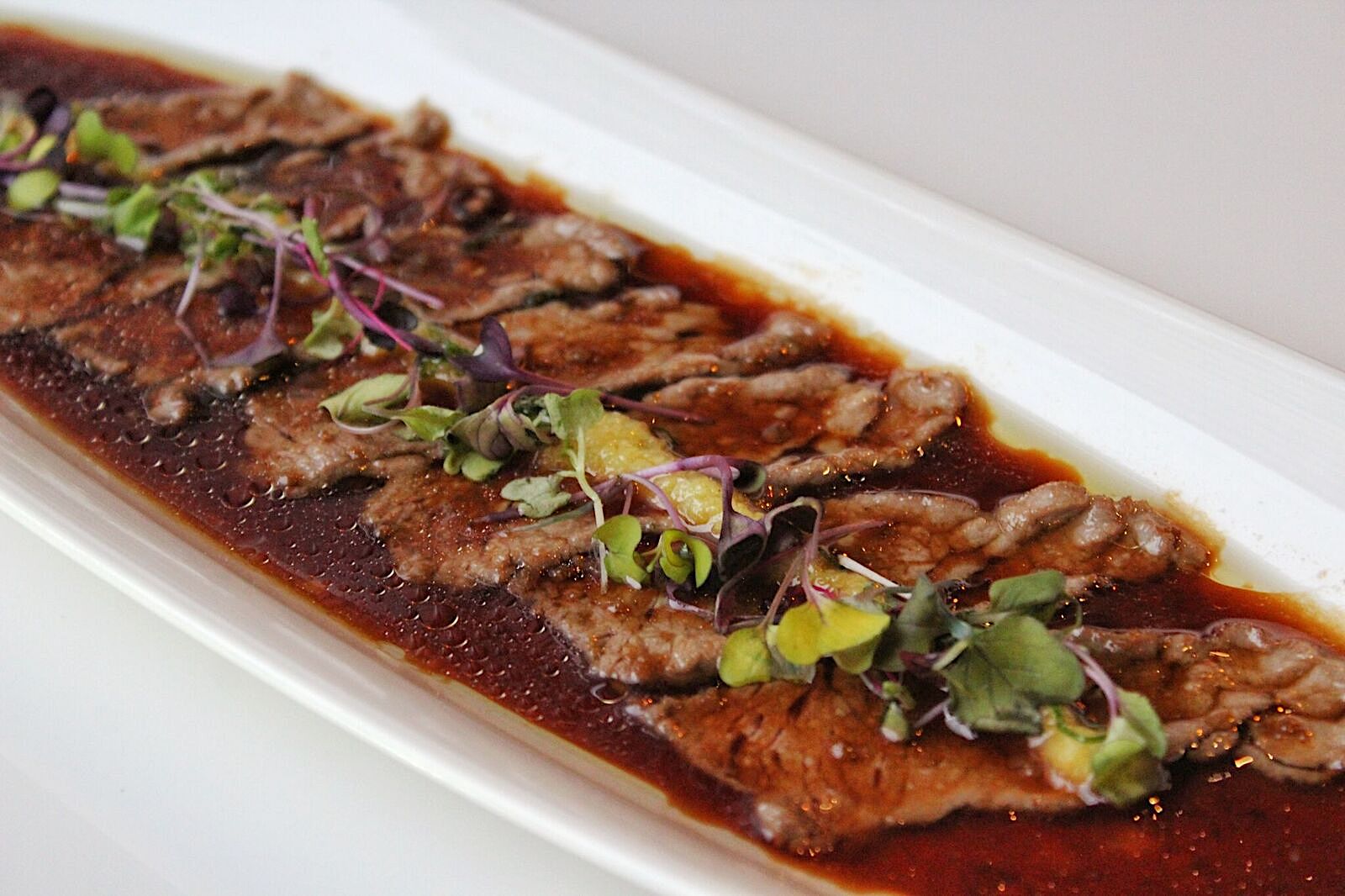 The menu is very long, rarely a good
sign, but, if you leave yourself in the hands of
the chef, as I did by asking him to choose his
best dishes from several sections of the
menu—appetizers, sushi, sashimi, rolls, hot main
courses—you will receive Japanese food of a high
order, the sashimi and sushi based on pristine
seafood, the rest packed with plenty of seasonings
and dressings.
The menu is very long, rarely a good
sign, but, if you leave yourself in the hands of
the chef, as I did by asking him to choose his
best dishes from several sections of the
menu—appetizers, sushi, sashimi, rolls, hot main
courses—you will receive Japanese food of a high
order, the sashimi and sushi based on pristine
seafood, the rest packed with plenty of seasonings
and dressings.
The wine list is short and
stocked with nothing but the most commercial
bottlings, but there is a good sake list and a
whole column of imaginative cocktails with names
like “Angry Dragon” and “Cracked Lobster.” 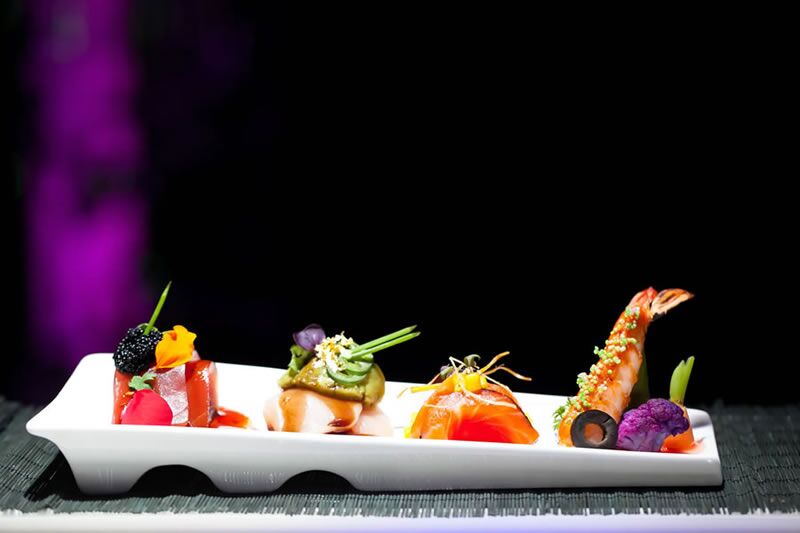
Everything that came from the
kitchen had enormous color in its presentation,
evoking the snazzy décor. The very first dish, a
filet mignon carpaccio with wasabi yuzu soy,
ginger and garlic, was one that I would order
every time I return. Very balanced in its many
flavors, the meat itself was thinly cut and
absorbed the other ingredients perfectly. Grilled
octopus ($12) was enlivened with piquillo pepper
in a yuzu
kosho pepper sauce, and yellowtail was
seared and served with cucumber, celery, a lovely
gel of yuzo
koshi and dashi sauce. Soy paper was wrapped
around a spicy lobster salad ($16) and shiitakes,
topped with salmon roe, mango chili, along with a
classic naruto
(with cucumber wrap) with spicy tuna that really
worked as an appetite spur ($12).
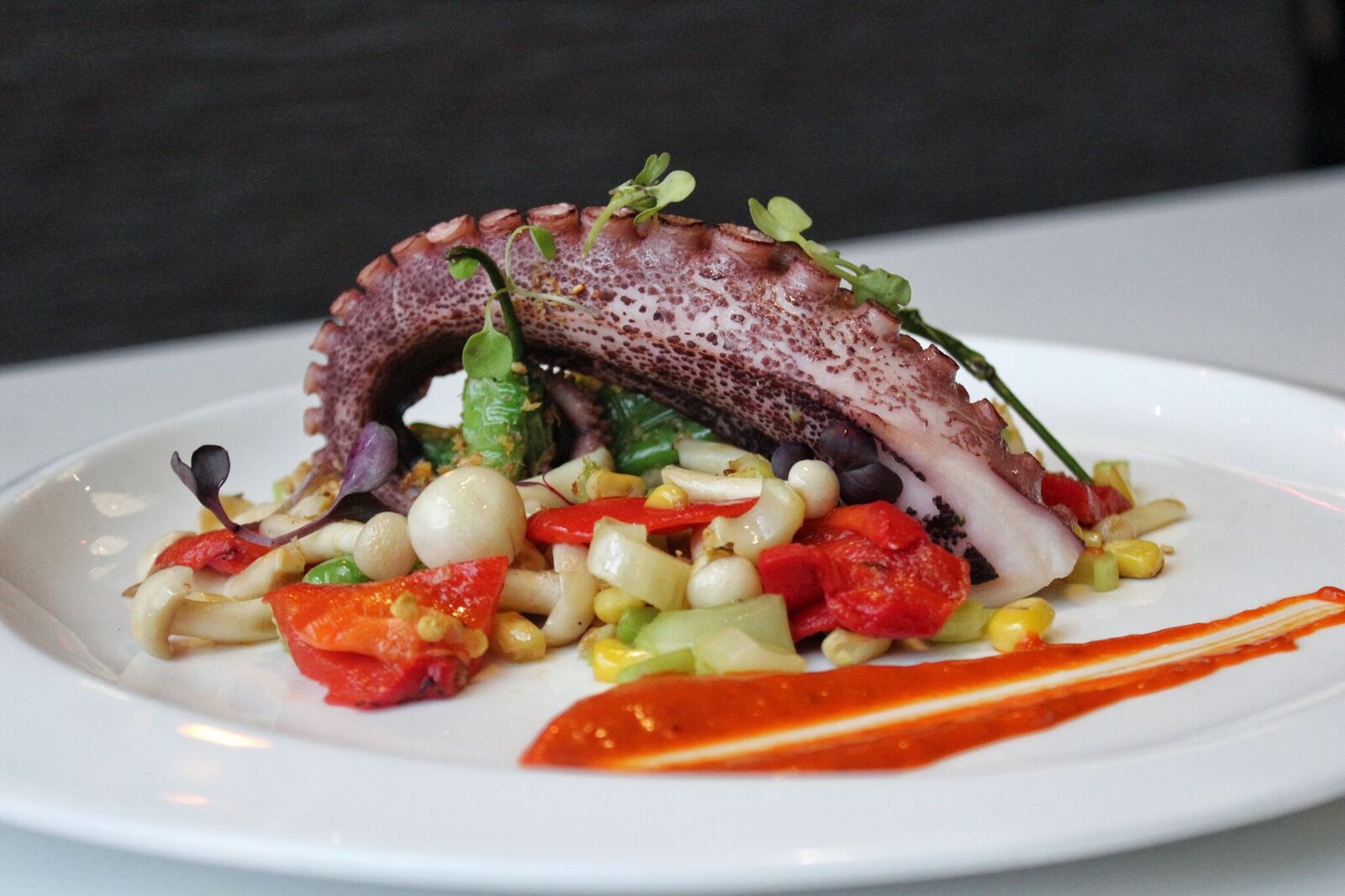 Calmer dishes followed
in a lavish platter of sushi and sashimi, each
distinct from the next, the sashimi lustrous and
the sushi well served by the lightly vinegared,
slightly warmed rice.
Calmer dishes followed
in a lavish platter of sushi and sashimi, each
distinct from the next, the sashimi lustrous and
the sushi well served by the lightly vinegared,
slightly warmed rice.
“Deep
blue sea” ($16) is a delectable dish of blue crab,
avocado and mango topped with seared spicy tuna
and eel sauce, and crunchy tuna—really good—with
an wasabi aïoli took the name “Valentine roll”
($15).
Richer flavors were next in a fried King crab with avocado, kani roll of shrimp topped with spicy tuna and sweet Thai chili whose flavors melded but hit all on their own. Thai basil chicken ($20) was a departure, with wok-fried chicken, mushrooms, onion, carrot, basil and chili paste. Portions for everything are very generous. Desserts are negligible.
Kashi does have something of a Vegas-style vibe that contrasts with the traditional ambiance of a sushi bar. So, next time I go, I will sit myself at the counter, nod to the chef and concentrate on his mastery while enjoying Asian food rare in a big city like Stamford. Along with OKO Kitchen in Westport, Kashi gives Connecticut two excellent options for a wide-ranging cuisine.
❖❖❖
 VINTAGE
AND
“PRESTIGE” CHAMPAGNES
VINTAGE
AND
“PRESTIGE” CHAMPAGNES
More Than Just For Toasting
By Geoff Kalish
While they can be quite costly, vintage and so-called “prestige” French Champagnes provide bouquet and taste rarely found in lesser bubblies, making them perfect to mate with even the most delicate fare. In fact, merely toasting with these wines often fails to allow them to provide maximum gustatory pleasure, because their combinations with food seems, in most instances, to heighten not only the flavor of the fare, but of the bubbly itself.
Of note, what sets these wines apart from other Champagnes is generally the great attention to detail in their grape-growing and processing procedures. For example, only top-level specific plots of grapes grown in a particular year are selected for inclusion, with meticulous planning and care at harvest time and technique as well as fermentation, aging, blending and bottling. And, as affirmation of this, the Wine Media Guild (a professional organization of wine writers and communicators) recently held a luncheon tasting of 17 of these top-shelf Champagnes at Manhattan’s Il Gattopardo restaurant. What emerged was not only a testament to the exceptional aesthetics of these bubblies but their great affinity for a range of fare. The following are some brief notes on my top ten in the tasting—although I wouldn’t turn down an opportunity to drink any of the 17.
“Prestige” Champagnes
These are blended Champagnes, from grapes harvested in a number of years, with blends varying from producer to producer, but considered their top-of –the-line bottling.
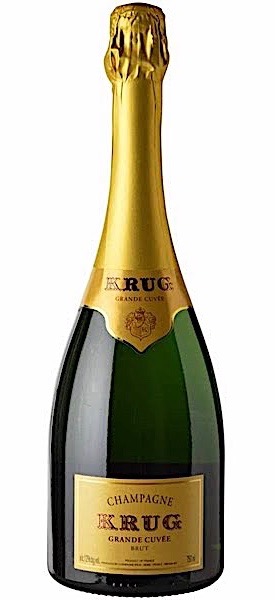 NV
Krug “Grande Cuvée” Brut 166th edition ($180)
NV
Krug “Grande Cuvée” Brut 166th edition ($180)
I’ve been a fan of this barrel-fermented bubbly since first tasting it with Rémy Krug some 30 years ago. Made from a blend of Chardonnay, Pinot Noir and Pinot Meunier culled from over 100 different wines produced over 10 years, it has a rich, toasty bouquet and taste with notes of honey and spice in its long elegant finish. It’s perfect to mate with main course items like duck, beef or lamb.
NV Collet “Espirit Couture” ($120)
Packaged in an elegant hand-blown glass bottle, it’s made from a blend of Pinot Noir, Chardonnay and Pinot Meunier from Prémiere and Grand Cru vineyards. It shows a bouquet and taste of white peaches and brioche, with hints of dried apricots in its long, smooth finish and marries well with scallops, shrimp or halibut.
NV Alfred Gratien “Cuvée
Paradis” Rosé ($100)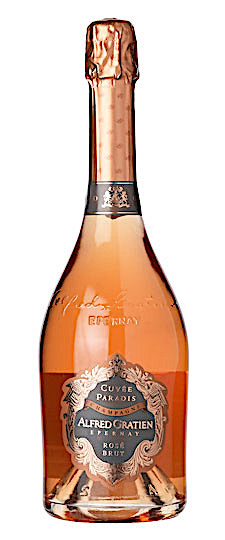
The only rosé in the tasting, it was fashioned from a blend of Pinot Noir and Chardonnay and showed a robust bouquet and the taste of ripe strawberries and raspberries, with notes of cherry in its vibrant finish. It pairs perfectly with hors d’oeuvres like smoked salmon, foie gras or caviar.
Vintage Champagnes
Comprising less than 5% of all Champagne produced, all the grapes used must be from the same vintage and bottle aging must be for at least 3 years – as compared with 15 months for non-vintage Champagne.
2006 Taittinger Blanc de Blancs Comtes de Champagne ($140)
This 100% Chardonnay-based bubbly, produced only in exceptional years, shows a complex bouquet and taste of apples and notes of lemon and mint, with a light but memorable finish. It marries harmoniously with shrimp, scallops or other denizens of the deep, as well as roasted chicken or turkey. Expect this wine to actually improve with 5 to 10 years of aging, with even greater complexity in its bouquet and taste.
2012 Ayala Blanc de Blancs ($65)
This extremely well-priced bubbly was produced from 100% Chardonnay grapes grown in Grand Cru vineyards. It has a smoky bouquet and tastes of toast, peaches and pears with a hint of lemon in its dry, crisp finish. It’s ideal to pair with bivalves, shrimp or crabmeat cocktail and pasta with white wine sauce.
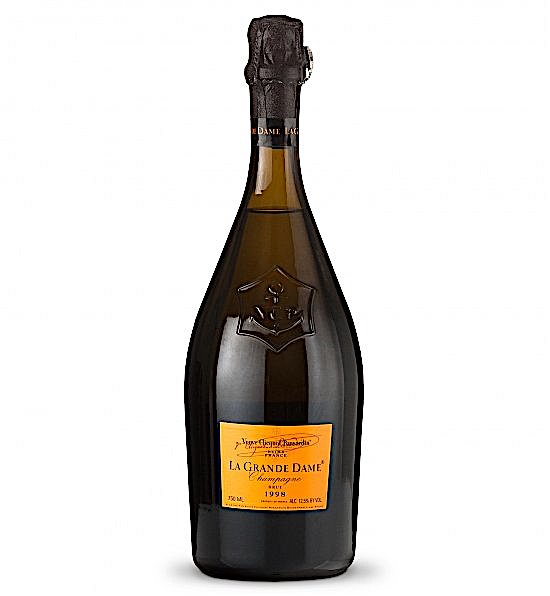
2009 Moët & Chandon Cuvée Dom Pérignon ($165)
This classy, classic bubbly shows a rich floral bouquet and taste of cherries, brioche and grapefruit with notes of orange zest in its long, elegant finish. It marries well with a wide range of appetizers, from smoked fish to hummus laced with white truffle oil as well as main courses of roasted chicken or grilled salmon.
2008 Veuve Cliquot Ponsardin “La Grande Dame” ($160)
Containing about 60% Pinot Noir and 40% Chardonnay, this wine, which honors Madame Clicquot (who was widowed at age 27 and took over her husband’s Champagne business and ran it to perfection), shows a floral bouquet and tastes of ripe plums and honey, with a bit of spice in its long fruity finish. It pairs well with hors d’oeuvres like pigs in a blanket and mini egg rolls as well as appetizers like grilled octopus or calamari.
2005 Henriot “Cuvée Hemera” Brut ($200)
Named in homage to the
Greek Goddess of daylight, this wine is a
blend of 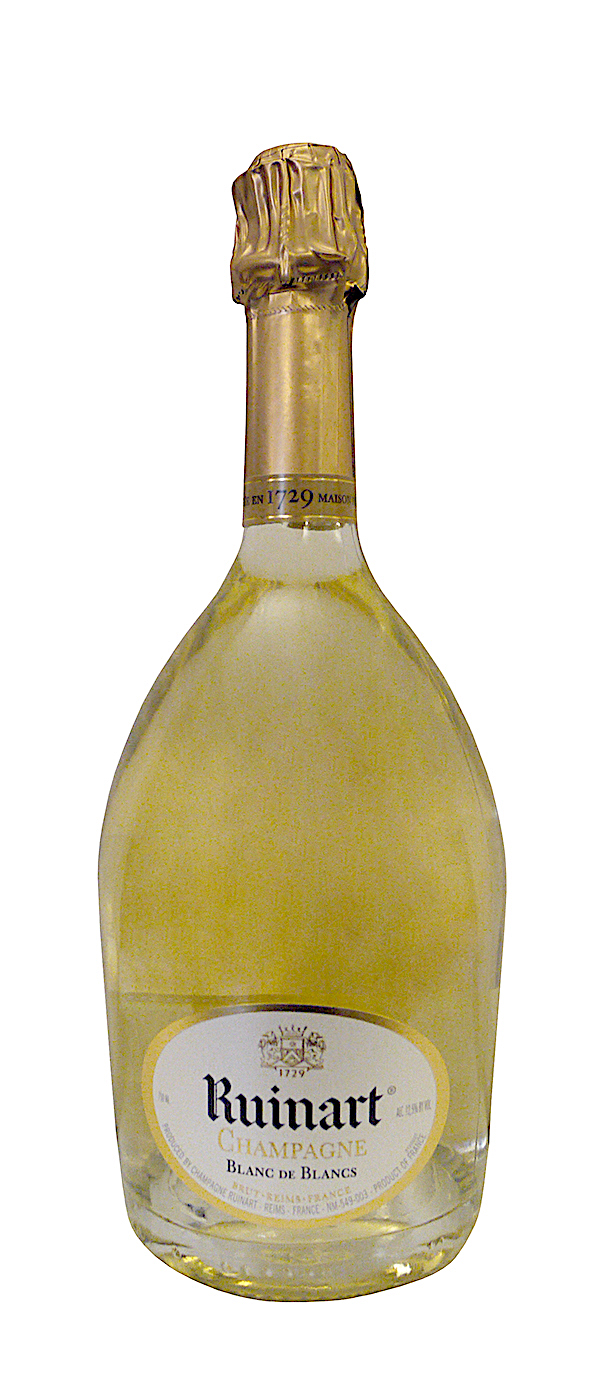 Chardonnay
(50%) and Pinot Noir (50%). It shows a
toasty bouquet and tastes of apricots and
honey and makes great accompaniment for main
course items like grilled branzino, pasta
with white wine sauce or pork roast.
Chardonnay
(50%) and Pinot Noir (50%). It shows a
toasty bouquet and tastes of apricots and
honey and makes great accompaniment for main
course items like grilled branzino, pasta
with white wine sauce or pork roast.
2007 Boizel Grand Vintage ($75)
Made from a blend of Pinot Noir (50%), Chardonnay (40%) and Pinot Meunier (10%) this wine shows a bouquet and taste of ripe apples, toast and lemon zest. It mates best with bivalves or sushi.
2007 Ruinart Dom Ruinart Blanc de Blancs ($150)
This is a light, fruity, 100% Chardonnay wine that lacks some of the complexity of other vintage Champagnes but makes up for it in its vibrant, refreshing taste. It’s a good choice to mate with robust cheeses or pasta with red sauce.
❖❖❖

Although no peanuts are even served
in-flight, American Airlines is
offering its customers with nut allergies an
opportunity to board early so they can wipe down
their seats, tray tables, arm rests, and areas
of any allergens.
 FOOD WRITING 101: TRY NOT TO
FOOD WRITING 101: TRY NOT TO SOUND LIKE AN ABSOLUTE TWIT
"Is it worth it? I’m afraid it is. I’ll genuinely never
forget the experience. I feared it would be Trumpy; it’s
not — it has class. Is it the greatest, most ambitious,
most technically flawless food? Not even close: it’s the
sort of thing that could be produced by well-drilled,
competent line cooks. Good-quality ingredients, done by
rote, as reliable as a McDonald’s. Is it delicious? Yes,
yes, yes: boosted by salt and butter and sugar into
hedonistic excess. That duck: mon amour. If
you’ve never been subjected to the ludicrous joys of
gueridon service, the recherché pleasures of the ornate
duck press, this is where to fill your hand-tooled,
bespoke boots. Don’t even bother looking for prices
online — as they say, if you have to ask …” "On
the Grill," Sunday
Times (11/18/18)
Wine
Column Sponsored by Banfi Vintners
SANGIOVESE
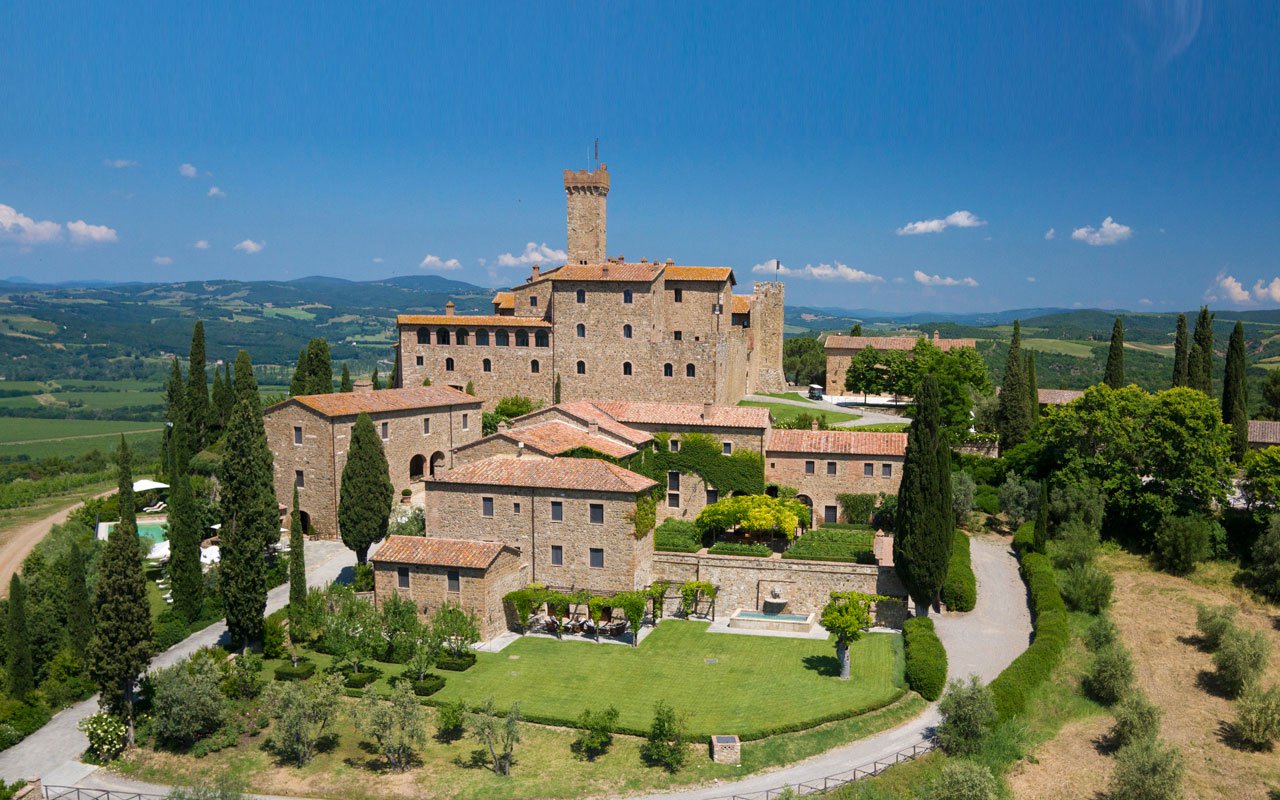 Wine is a joy year-round but
in cooler weather one
grape varietal has really taken center stage in
my daily activities – that most Italian of
grapes, Sangiovese, and its ultimate expression
– Brunello di Montalcino.
Wine is a joy year-round but
in cooler weather one
grape varietal has really taken center stage in
my daily activities – that most Italian of
grapes, Sangiovese, and its ultimate expression
– Brunello di Montalcino.
From mid-September through mid-October,
the Sangiovese grown for our various styles of red
wines are be harvested, culminating with the top
selection for Brunello di Montalcino.
Second, cooler weather here means
it is time to start enjoying more red wines and
especially Sangiovese based wines. That
includes Banfi’s cru of Brunello, Poggio alle Mura,
literally the cream of the crop of our Sangiovese
vineyards. Alongside our Poggio alle Mura Brunello di
Montalcino, this year we introduced two more wines
from the cru Poggio alle Mura – a Rosso di Montalcino
and a Riserva of Brunello. Rosso is sort of like the
younger brother of Brunello, also made from 100%
Sangiovese grapes but usually a selection from younger
vines and the wine is aged only two years compared to
the four required for Brunello. The
Riserva, on the other hand, is an even more selective
harvest of Sangiovese, and ages for an additional year
before release.
What is so special about this cru
Poggio alle Mura?
Well, it is the result our over 30 years of
ongoing research at my family’s vineyard estate,
Castello Banfi.
When we first began planting our vines there in
the late 1970s studies from the University of Bordeaux
indicated which strains of many varietals we should
plant, based on the soil type and microclimate of each
vineyard. But
when it came to the region’s native Sangiovese, there
was only local lore, no scientific research. So we took
it upon ourselves to figure out this vine, and set off
on three decades of incredibly detailed research.
We started
with 600 apparent variations on Sangiovese, because it
is so susceptible to variations in weather and soil,
and narrowed that down to 160 truly genetically
different clones.
We planted a vineyard with two rows of each
type, made wine from each of them, and charted the
differences – remember, you only get one chance a year
to make wine, so this took time.
It took about ten years to get some
concrete results, though we continue to experiment
today and always will – you never stop learning in
science and nature!
Once we determined which were the best,
complementary clones that could be planted together to
make the best Brunello, we chose to plant them in what
we determined to be the optimal vineyard sites. Coincidentally,
the best soils and climate conditions are in the
slopes surrounding the medieval fortress today known
as Castello Banfi, known since Etruscan times as
Poggio alle Mura – the walled hilltop. Hence the
name of our most special “cru” of Brunello,
representing a synthesis between tradition and
innovation.
Though the focus of this study was
our Brunello, all of our Sangiovese-based wines,
including the super Tuscans SummuS, Cum Laude, and
Centine, benefitted from this work. And that’s
the third reason for celebrating Sangiovese this
month, for the range of wonderful reds that usher us
into autumn! One
wine in particular was inspired by our research – the
BelnerO, a Sangiovese dominant blend with what I like
to call a kiss of Cabernet and a whisper of Merlot. We grow the
grapes a little differently for BelnerO than for
Brunello, make the wine with less oak aging and
released it earlier from the winery, providing a
counterpoint to Brunello and a lovely terroir-driven
wine in its own right.
If you
know Italians, you know that by nature we are
multi-faceted, varying in mood, and always passionate. As a
nation, we span from the hot sunny beaches of Sicily
near the African coast to the rugged mountains and
Alpine ski slopes of Trentino-Alto Adige in the north. Sangiovese
is grown in almost all of Italy’s regions and reflects
the unique nature of each; it is most famous
(rightfully so) in Tuscany, yet even there it reflects
the nuances of each hilltop, valley and subzone. It has
something a little different to say in Brunello than
Chianti, Morellino than Vino Nobile di Montepulciano,
Rosso di Montalcino than Super Tuscan blends.
Here is a smattering of
Sangiovese-based wines that you may wish to get to
know better, reflecting a spectrum that appeals to
every occasion, every taste, and every budget. We can
assure you that the conversation will never become
boring. 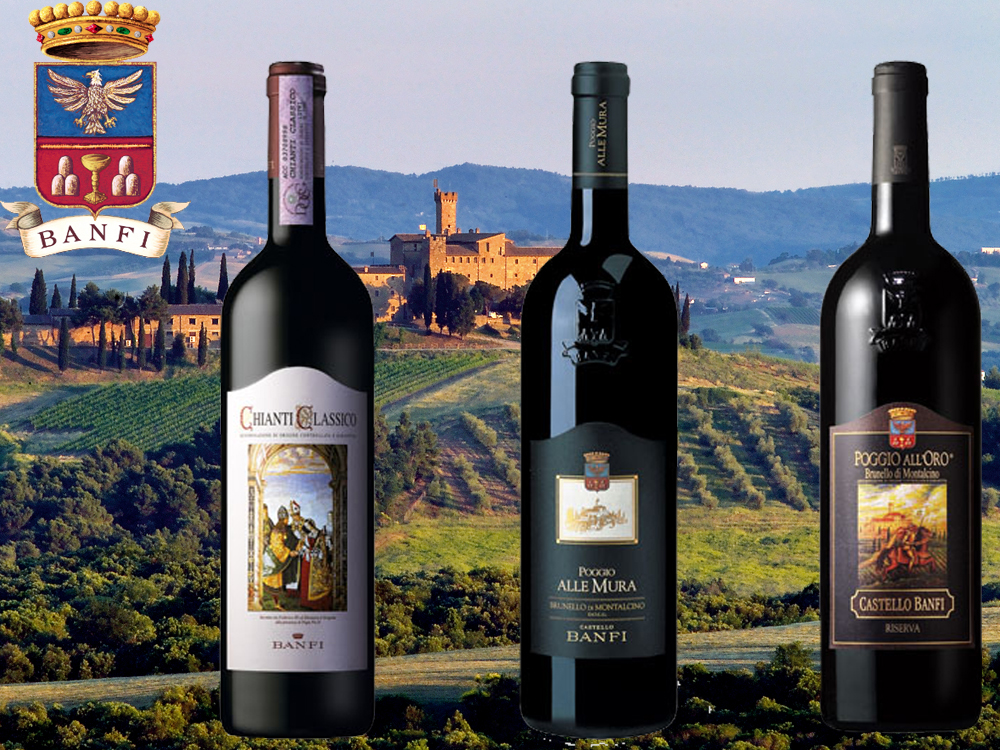
Recommendations for Celebrating
Sangiovese
BelnerO Proprietor’s Reserve Sangiovese
– A refined
cuvée of noble red grapes perfected by our pioneering
clonal research. This dark beauty, BelnerO, is
produced at our innovative winery, chosen 11
consecutive years as Italy’s Premier Vineyard Estate.
Fermented in our patented temperature controlled
French oak and aged approximately 2 additional years.
Unfiltered, and Nitrogen bottled to minimize sulfites.
Castello Banfi Brunello di Montalcino –
Rich, round, velvety and intensely
aromatic, with flavor hints of licorice, cherry, and
spices. Brunello di Montalcino possesses an intense
ruby-red color, and a depth, complexity and opulence
that is softened by an elegant, lingering aftertaste.
Unfiltered after 1998 vintage.
Castello Banfi Rosso di Montalcino – Brunello's "younger brother," produced
from select Sangiovese grapes and aged in barrique for
10 to 12 months. Deep ruby-red, elegant, vibrant,
well-balanced and stylish with a dry velvety
finish.
Poggio all’Oro Brunello di Montalcino
Riserva – A single vineyard selection of our most
historically outstanding Sangiovese, aged five years
before release, the additional year more than that
required of Brunello including 6 months in barrel and
6 months more in bottle to grant its “Riserva”
designation. Incredible
elegance and harmony. Intense with lots of fruit and
subtle wood influence. Round, complete, well balanced
with hints of chocolate and berries. Unfiltered after
1998.
Poggio alle Mura – The first tangible result of years of
intensive clonal research on Montalcino’s native
Sangiovese grape.
Estate bottled from the splendidly sun drenched
vineyards surrounding the medieval Castello from which
it takes its name.
The Brunello
di Montalcino is seductive, silky and smoky. Deep ruby
in color with an expressive bouquet of violets, fruits
and berries as well as cigar box, cedar and exotic
spices. The Rosso
di Montalcino is also intense ruby red. The bouquet
is fresh and fruity with typical varietal notes of
cherry and blackberry, enriched by more complex hints
of licorice, tobacco and hazelnut. It is full
bodied, yet with a soft structure, and a surprisingly
long finish. The Poggio alle Mura Brunello di Montalcino
Riserva is deep ruby red with garnet
reflections and a rich, ample bouquet that hints of
prune jam, coffee, cacao and a light balsamic note. It is full
and powerful, with ripe and gentle tannins that make
it velvety and harmonious; this wine is supported by a
pleasing minerality that to me speaks soundly of that
special hillside in southern Montalcino.
SummuS – A wine of towering elegance, SummuS is an
extraordinary blend of Sangiovese which contributes
body; Cabernet Sauvignon for fruit and structure; and
Syrah for elegance, character and a fruity bouquet. An elegant,
complex and harmonious red wine.
Cum Laude – A complex and elegant red which graduated
“With Honors,” characterized by aromas of juicy
berries and fresh spices.
Centine – A Cuvee that is more than half
Sangiovese, the balanced consisting of equal parts of
Cabernet Sauvignon and Merlot. Vinified in
a firm, round style that easily accompanies a wide
range of dishes, this is a smooth and fragrantly
satisfying wine with international character, and a
perennial favorite at my own dinner table.
Banfi Chianti Superiore – The “Superiore” designation signifies
stricter government regulations regarding production
and aging requirements, as compared to regular
Chianti. An
intense ruby red wine with fruit forward aromas and
floral notes. This
is a round wine with well-balanced acidity and fruit.
Banfi Chianti Classico – An enduring classic: alluring
bouquet of black fruit and violets; rich flavors of
cherry and leather; supple tannins and good acidity
for dining.
Banfi Chianti Classico Riserva – Produced from select grapes grown in the
"Classico" region of Chianti, this dry, fruity and
well-balanced red has a full bouquet reminiscent of
violets.
Fonte alla Selva Chianti Classico – This is our newest entry into the Chianti
arena, coming from a 99 acre estate in Castellina, the
heart of the Chianti Classico region. The wine is
a captivating mauve red that smells of cherry, plum
and blackberry with hints of spice. It is
round, full and balanced with very good
acidity.
Col di Sasso – Sangiovese and Cabernet Sauvignon. Luscious,
complex and soft with persistent notes of fruit and
great Italian style structure.
Any of John Mariani's books below may be ordered from amazon.com.
 The Hound in Heaven
(21st Century Lion Books) is a novella, and
for anyone who loves dogs, Christmas, romance,
inspiration, even the supernatural, I hope you'll find
this to be a treasured favorite. The story
concerns how, after a New England teacher, his wife and
their two daughters adopt a stray puppy found in their
barn in northern Maine, their lives seem full of promise.
But when tragedy strikes, their wonderful dog Lazarus and
the spirit of Christmas are the only things that may bring
his master back from the edge of despair.
The Hound in Heaven
(21st Century Lion Books) is a novella, and
for anyone who loves dogs, Christmas, romance,
inspiration, even the supernatural, I hope you'll find
this to be a treasured favorite. The story
concerns how, after a New England teacher, his wife and
their two daughters adopt a stray puppy found in their
barn in northern Maine, their lives seem full of promise.
But when tragedy strikes, their wonderful dog Lazarus and
the spirit of Christmas are the only things that may bring
his master back from the edge of despair. WATCH THE VIDEO!
“What a huge surprise turn this story took! I was completely stunned! I truly enjoyed this book and its message.” – Actress Ali MacGraw
“He had me at Page One. The amount of heart, human insight, soul searching, and deft literary strength that John Mariani pours into this airtight novella is vertigo-inducing. Perhaps ‘wow’ would be the best comment.” – James Dalessandro, author of Bohemian Heart and 1906.
“John Mariani’s Hound in Heaven starts with a well-painted portrayal of an American family, along with the requisite dog. A surprise event flips the action of the novel and captures us for a voyage leading to a hopeful and heart-warming message. A page turning, one sitting read, it’s the perfect antidote for the winter and promotion of holiday celebration.” – Ann Pearlman, author of The Christmas Cookie Club and A Gift for my Sister.
“John Mariani’s concise, achingly beautiful novella pulls a literary rabbit out of a hat – a mash-up of the cosmic and the intimate, the tragic and the heart-warming – a Christmas tale for all ages, and all faiths. Read it to your children, read it to yourself… but read it. Early and often. Highly recommended.” – Jay Bonansinga, New York Times bestselling author of Pinkerton’s War, The Sinking of The Eastland, and The Walking Dead: The Road To Woodbury.
“Amazing things happen when you open your heart to an animal. The Hound in Heaven delivers a powerful story of healing that is forged in the spiritual relationship between a man and his best friend. The book brings a message of hope that can enrich our images of family, love, and loss.” – Dr. Barbara Royal, author of The Royal Treatment.
 |
The Encyclopedia of American Food and Drink by John F. Mariani (Bloomsbury USA, $35) Modesty forbids me to praise my own new book, but let me proudly say that it is an extensive revision of the 4th edition that appeared more than a decade ago, before locavores, molecular cuisine, modernist cuisine, the Food Network and so much more, now included. Word origins have been completely updated, as have per capita consumption and production stats. Most important, for the first time since publication in the 1980s, the book includes more than 100 biographies of Americans who have changed the way we cook, eat and drink -- from Fannie Farmer and Julia Child to Robert Mondavi and Thomas Keller. "This book is amazing! It has entries for everything from `abalone' to `zwieback,' plus more than 500 recipes for classic American dishes and drinks."--Devra First, The Boston Globe. "Much needed in any kitchen library."--Bon Appetit. |
"Eating Italian will never be the same after reading John Mariani's entertaining and savory gastronomical history of the cuisine of Italy and how it won over appetites worldwide. . . . This book is such a tasteful narrative that it will literally make you hungry for Italian food and arouse your appetite for gastronomical history."--Don Oldenburg, USA Today. "Italian
restaurants--some good, some glitzy--far
outnumber their French rivals. Many of
these establishments are zestfully described
in How Italian Food Conquered the World, an
entertaining and fact-filled chronicle by
food-and-wine correspondent John F.
Mariani."--Aram Bakshian Jr., Wall Street
Journal.
"Equal parts
history, sociology, gastronomy, and just
plain fun, How Italian Food Conquered the
World tells the captivating and delicious
story of the (let's face it) everybody's
favorite cuisine with clarity, verve and
more than one surprise."--Colman Andrews,
editorial director of The Daily
Meal.com. "A fantastic and fascinating
read, covering everything from the influence
of Venice's spice trade to the impact of
Italian immigrants in America and the
evolution of alta cucina. This book will
serve as a terrific resource to anyone
interested in the real story of Italian
food."--Mary Ann Esposito, host of PBS-TV's
Ciao
Italia. "John Mariani has written the
definitive history of how Italians won their
way into our hearts, minds, and
stomachs. It's a story of pleasure over
pomp and taste over technique."--Danny Meyer,
owner of NYC restaurants Union Square
Cafe, The Modern, and Maialino.
|
 |
 |
 |
 |
 |
 |
 |
 |
 Everett Potter's Travel Report:
Everett Potter's Travel Report: 
 Eating Las Vegas
JOHN CURTAS has been covering the Las Vegas
food and restaurant scene since 1995. He is
the co-author of EATING LAS VEGAS – The 50
Essential Restaurants (as well as
the author of the Eating Las Vegas web site: www.eatinglasvegas.
He can also be seen every Friday morning as
the “resident foodie” for Wake Up With the
Wagners on KSNV TV (NBC) Channel 3 in
Las Vegas.
Eating Las Vegas
JOHN CURTAS has been covering the Las Vegas
food and restaurant scene since 1995. He is
the co-author of EATING LAS VEGAS – The 50
Essential Restaurants (as well as
the author of the Eating Las Vegas web site: www.eatinglasvegas.
He can also be seen every Friday morning as
the “resident foodie” for Wake Up With the
Wagners on KSNV TV (NBC) Channel 3 in
Las Vegas.
MARIANI'S VIRTUAL GOURMET
NEWSLETTER is published weekly. Publisher: John Mariani. Editor: Walter Bagley. Contributing Writers: Christopher Mariani,
Robert Mariani, Misha Mariani, John A. Curtas, Gerry Dawes, Geoff Kalish,
and Brian Freedman. Contributing
Photographer: Galina Dargery. Technical
Advisor: Gerry
McLoughlin.
If you wish to subscribe to this
newsletter, please click here: http://www.johnmariani.com/subscribe/index.html
© copyright John Mariani 2017

